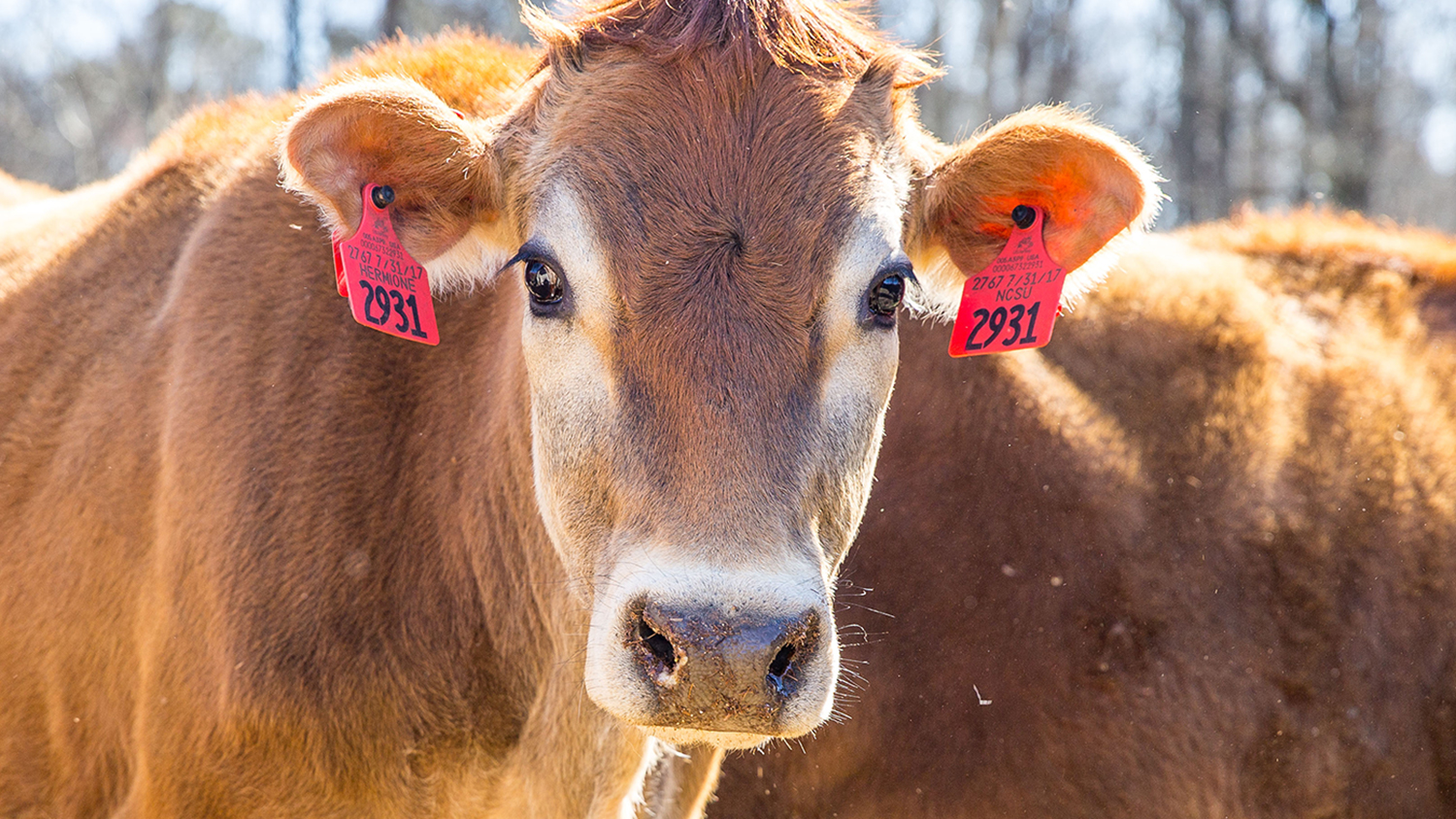Model Predicts Cross-Species Contamination Risk for Livestock

For Immediate Release
A new mathematical model from researchers at North Carolina State University reveals the high risk of cross-species disease spread on farms with more than one type of livestock. According to the model, biosecurity efforts focused on the top 3% of farms in a particular contact network may significantly cut back cross-species disease dissemination.
“Most disease-prevention programs focus control and prevention measures on one species; however, it is well known that cross-species transmissions occur,” says Gustavo Machado, assistant professor of population health and pathobiology at NC State and corresponding author of a paper describing the work. “For example, foot-and-mouth disease can be transmitted among all ungulate species. And all of these farms are connected – they sell and share animals all the time.”
Machado and postdoctoral researcher Nicolas Cardenas created a stochastic mathematical model that described the “connectedness” of farms in one area of Southern Brazil. The model included three years’ worth of data for a population of 90 million animals and traced over 1.6 million animal movements between farms, such as animal sales and grow-finishing movements.
The model simulated disease outbreaks that began in cattle, swine, and small ruminants (i.e., sheep or goats), respectively, in order to determine the likelihood of cross-species contamination in each case. They ran 1,000 distinct simulations 100 times each to identify all possible outbreak routes.
“It doesn’t matter where the outbreak starts, the entire farm – and the larger farm network in a community – is at risk,” Cardenas says. “We ran simulations with diseases that are transmitted by direct contact, and modeled outbreaks that started on both single-species and multi-host farms to see if there was a difference in outcome, and there wasn’t.”
However, Cardenas says, knowing how farms interact with each other and focusing biosecurity and prevention efforts on the most interconnected farms does have an impact.
“The model allowed us to construct a contact network between all of the farms in the study,” Cardenas says. “The farms with the greatest numbers of contacts, or hub farms – regardless of how many animals move between them – are the focal points for disease transmission.”
The researchers found that identifying the top 3% of hub farms and focusing biosecurity efforts there dramatically reduced the number of secondarily infected farms.
“The model shows us a number of interesting points,” Machado says. “First, it shows us that we cannot look only at the immediately affected species during an outbreak, as all of the animals are at risk. Second, if you target biosecurity efforts toward the top ~3% of the most networked farms you can reduce transmission on those farms and protect other species as well.
“We hope that this model can help public health officials and farmers target disease counteraction efforts more efficiently and cost-effectively.”
The work appears in Veterinary Research and was supported by the Fundo de Desenvolvimento e Defesa Sanitária Animal (FUNDESA-RS) under award number 2021-1318.
-peake-
Note to editors: An abstract follows.
“Multiple species animal movements: network properties, disease dynamics and the impact of targeted control actions”
DOI: 10.1186/s13567-022-01031-2
Authors: Nicolas C. Cardenas, Abagael L. Sykes, Gustavo Machado, North Carolina State University; Francisco P. N. Lopes, Departamento de Defesa Agropecuária, Porto Alegre, Brazil
Published: Online Feb. 22, 2022 in Veterinary Research
Abstract:
Infectious diseases in livestock are well-known to infect multiple hosts and persist through a combination of within- and between-host transmission pathways. Uncertainty remains about the epidemic dynamics of diseases being introduced on farms with more than one susceptible host species. Here, we describe multi-host contact networks and elucidate the potential of disease spread through farms with multiple hosts. Four years of between-farm animal movement among all farms of a Brazilian state were described through a static and monthly snapshot of network representations. We developed a stochastic multilevel model to simulate scenarios in which infection was seeded into single host and multi-host farms to quantify disease spread potential, and simulate network-based control actions used to evaluate the reduction of secondarily infected farms. We showed that the swine network was more connected than cattle and small ruminants in both the static and monthly snapshots. The small ruminant network was highly fragmented, however, contributed to interconnecting farms, with other hosts acting as intermediaries throughout the networks. When a single host was initially infected, secondary infections were observed across farms with all other species. Our stochastic multi-host model demonstrated that targeting the top 3.25% of the farms ranked by degree reduced the number of secondarily infected farms. The results of the simulation highlight the importance of considering multi-host dynamics and contact networks while designing surveillance and preparedness control strategies against pathogens known to infect multiple species.


